A year ago, I was freezing my ass off in Antarctica, stuck on The Ice as a “winterover.” Those of us who spend winters in Antarctica get an up close and personal look at the worst nature can throw at a person—some very cold, dark, windy extremes. Six months in the coldest, driest (windiest, emptiest) place on Earth can take a toll on you, and I was looking for a way to recharge. So, as I whiled away the winter dreaming of warm places and sunny adventures, the idea to kayak from one island to another in a tropical paradise was born.
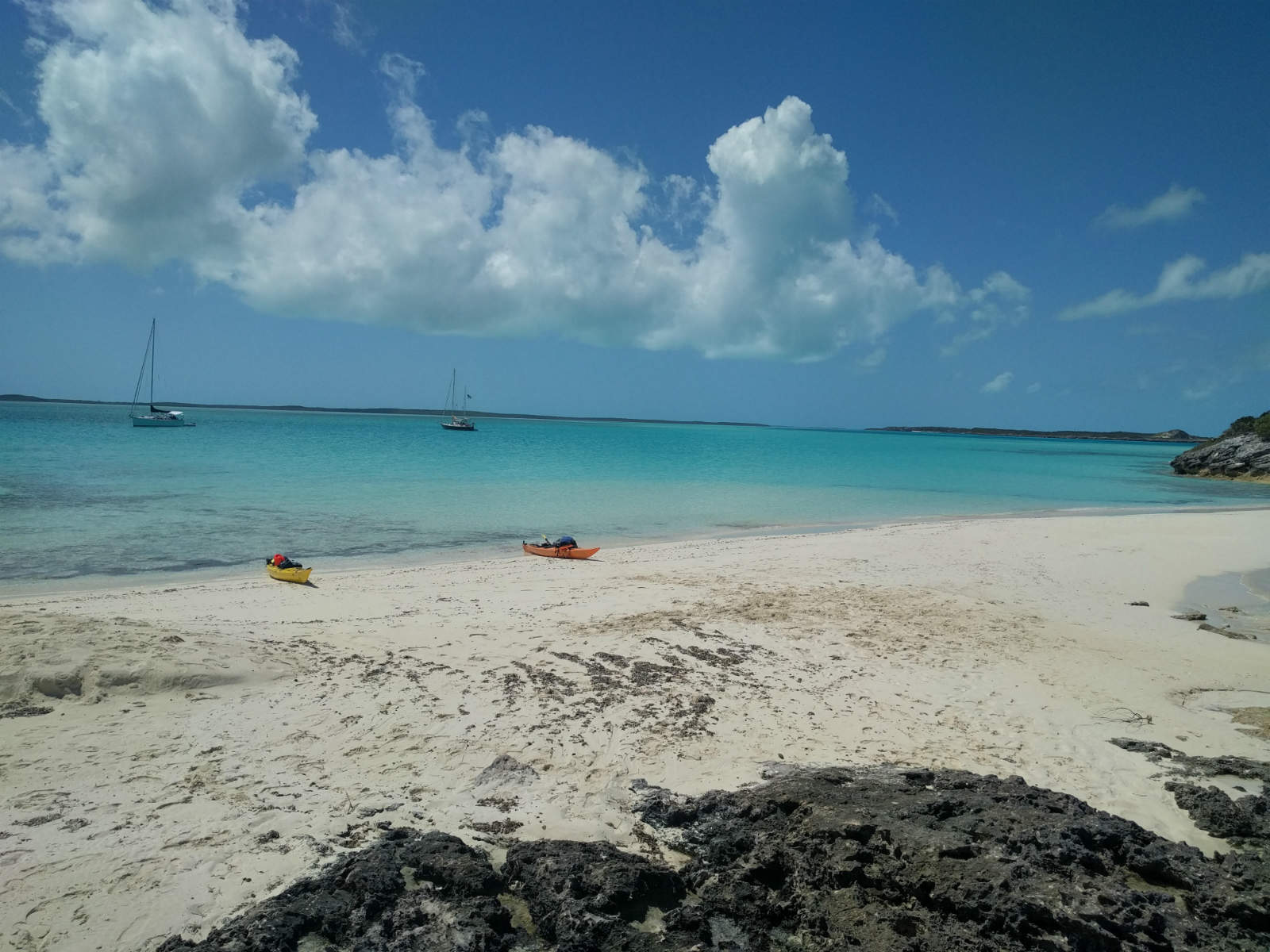
I spent my days supporting scientific research, but in my spare time, I was doing research of my own—looking at pictures of sandy-shored islands and determining where I could kayak. I settled on the Exumas in the Bahamas. The Exuma Islands consist of over 300 cays that stretch about 100 miles from top to bottom. I figured a week of paddling there would do me some good and let me soak up the sun and warmth I was missing.
Thus I found myself on a plane, approaching Nassau airport, blissfully putting miles between me and The Ice. I looked out the window and admired the various shades of blue and gold that encircled the island, happy in the knowledge that in a few hours I would be surrounded by those beautiful waters—kayaking, swimming, and snorkeling to my heart’s content.
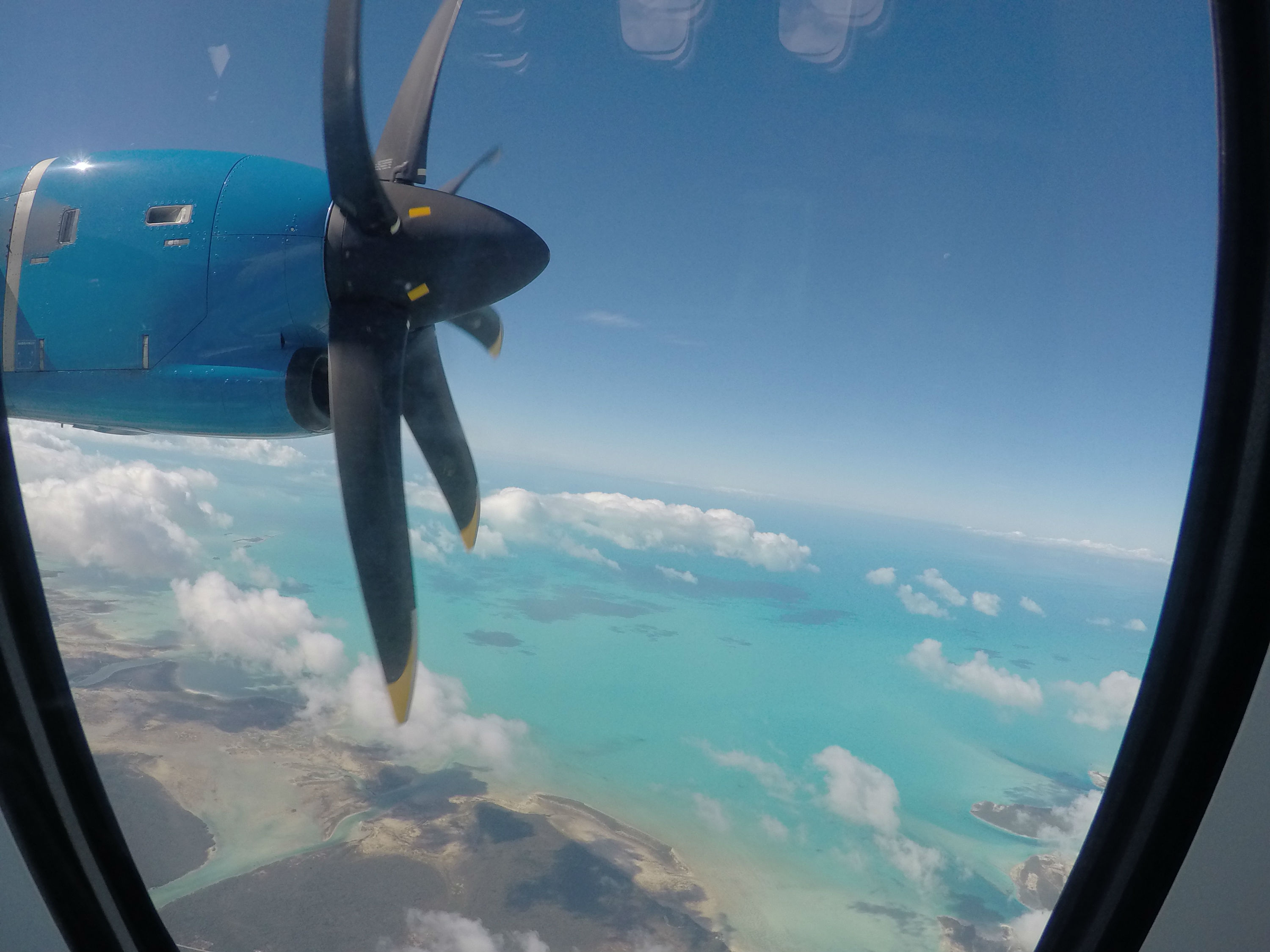
I met my partner at the small airport in Nassau, and we quickly boarded an island-hopper to Great Exuma. There we connected with Out Island Explorers to rent kayaks and other gear we couldn’t or didn’t want to pack. The owner, Dallas, set us up with a couple of Necky Looksha touring boats. He asked about our plans for the week—where we wanted to go and what we wanted to see—and we told him we really didn’t have any. Dallas just smiled and told us we were in the right place.
We drove out to Rolleville on the Northeast end of the island to begin our journey. Dallas briefed us on the charts and wished us luck as he shook our hands and we bid farewell. After organizing our haphazard pile of food, water, rum and camping gear, we packed the boats and shoved off from the beach into the most pristine turquoise waters imaginable.

The greatest part of kayaking in the Exumas is the water. It rarely reaches depths greater than three feet. Sure there are some passages between the islands where the current runs strong and the water turns a deep blue in about 30 feet of water, but it’s mostly shallow, calm and protected. So, the majority of our time paddling was spent traversing shimmering sandbars, where fish and giant stingrays would glide along just below the boats.
Our first stop was a small island called Big White Cay where a small colony of semi-feral pigs inhabits the beach.
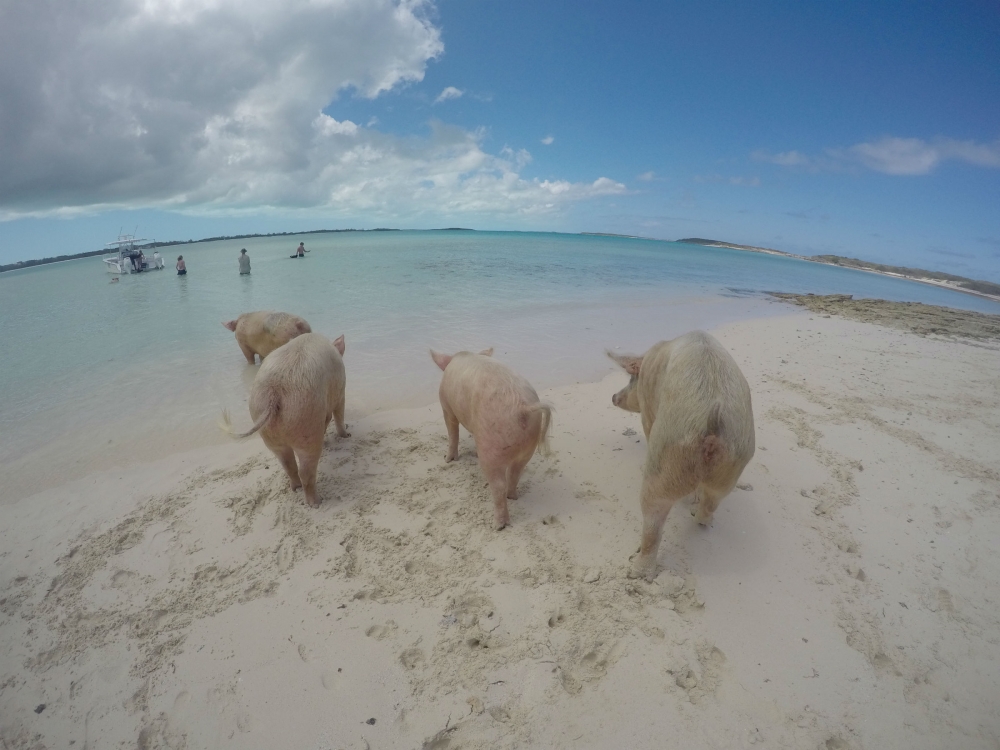
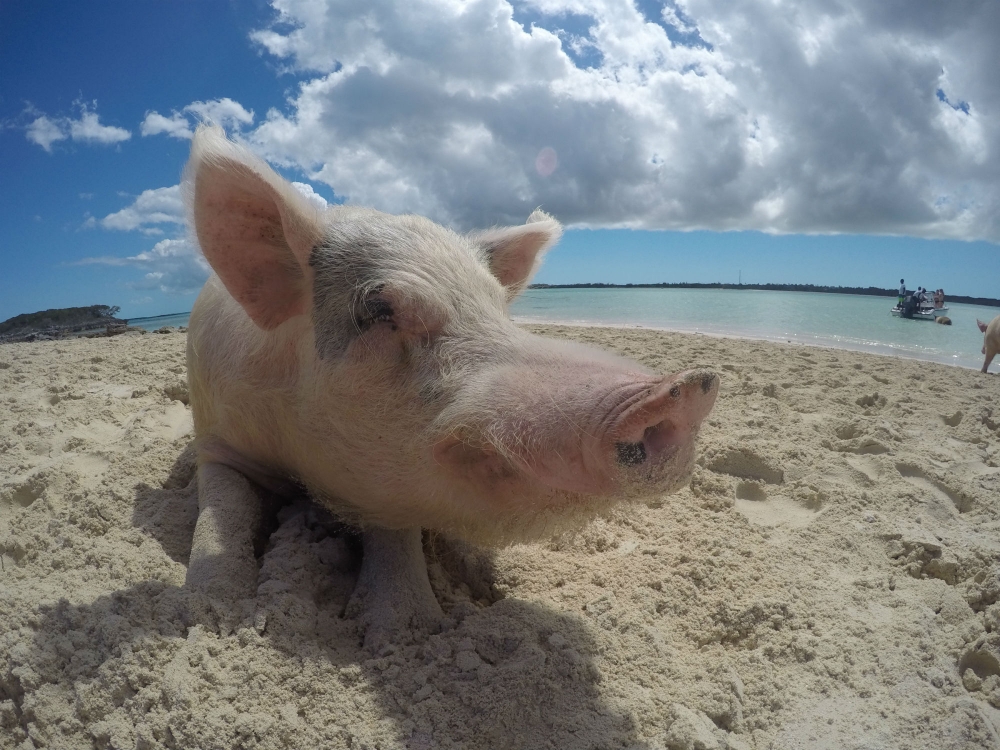

The story goes that a local who owns a nearby bar brought some pigs out to the island to encourage tourism down in the southern end of the island chain. As we pulled up the beach, we were greeted by a small horde of curious piggies. Turns out the local’s plan worked. Moments after we arrived, a couple of motorboats raced up and unloaded a bunch of tourists. These tour operators bring food to the pigs and in return, their guests get to swim in the crystal water with the moderately domesticated swine. No wonder the pigs were so eager to greet us humans. It was a fun experience—for a short time—but once the pigs started to gnaw on our kayaks and deckbags, it was time to go. As we were gearing up to leave, one of the tourists approached us and asked what we were up to. In particular, he remarked about the janky gasoline-filled water jug strapped to one of the boats (we forgot to pack an extra fuel bottle, so we had to dumpster-dive for a container). It seems the dirtbag reputation is never too far behind, no matter where you go.
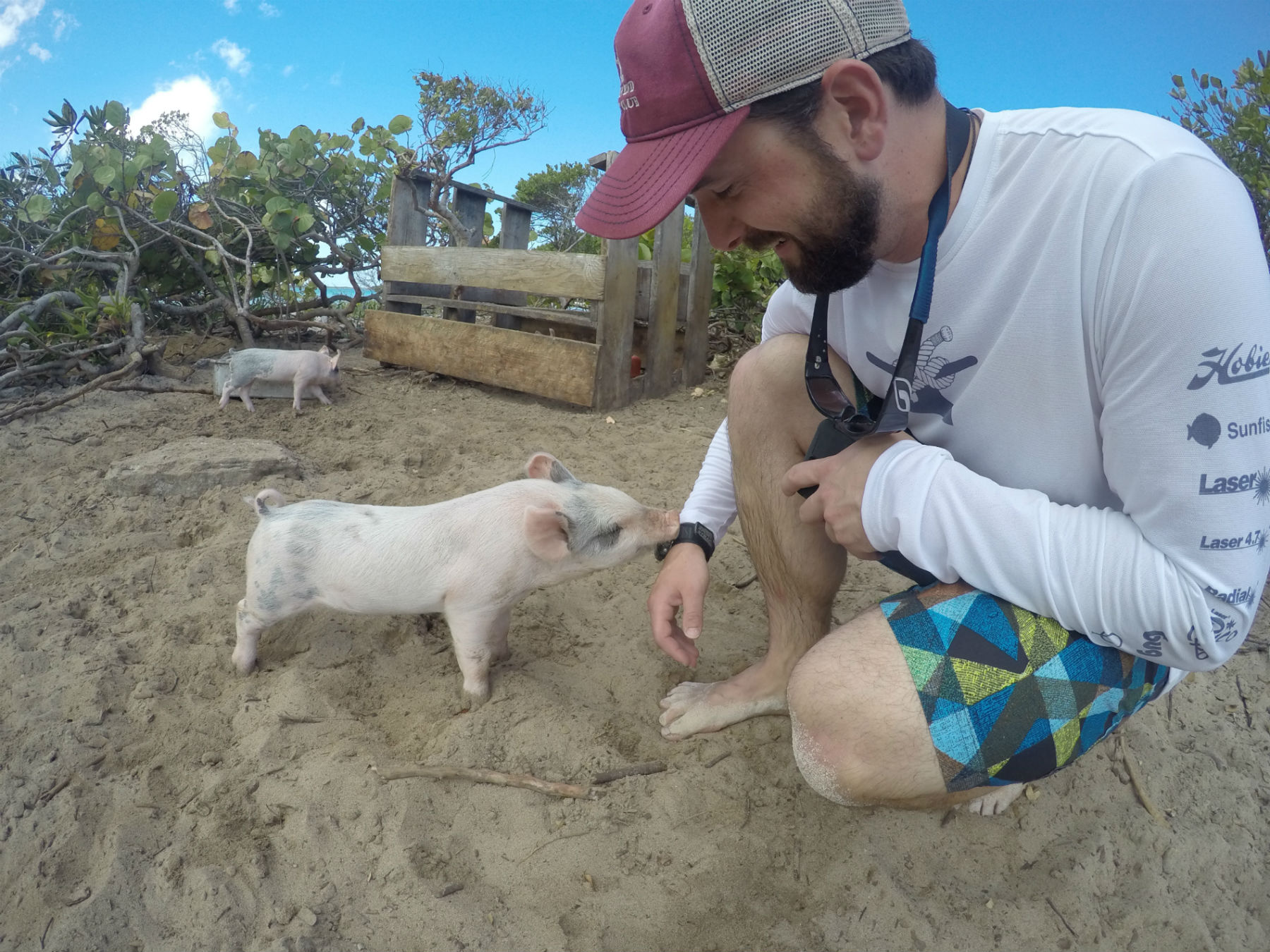
We continued up the islands, and after a few hours of pleasant paddling, we pulled into Levi Cay and set up our first camp on the beach. Within the Exumas chain you’re allowed to camp on most beaches. The water below the high tide line is public, so you can always land, and even though many of the cays are private, camping is either allowed, or tacitly overlooked. Thus, no matter how far you paddle or what the weather is doing, you can always find a little spot to pitch your tent (or hammock). And best of all, as long as the wind is right and you’re able to find enough driftwood, having bonfires on the beach tops off every evening.
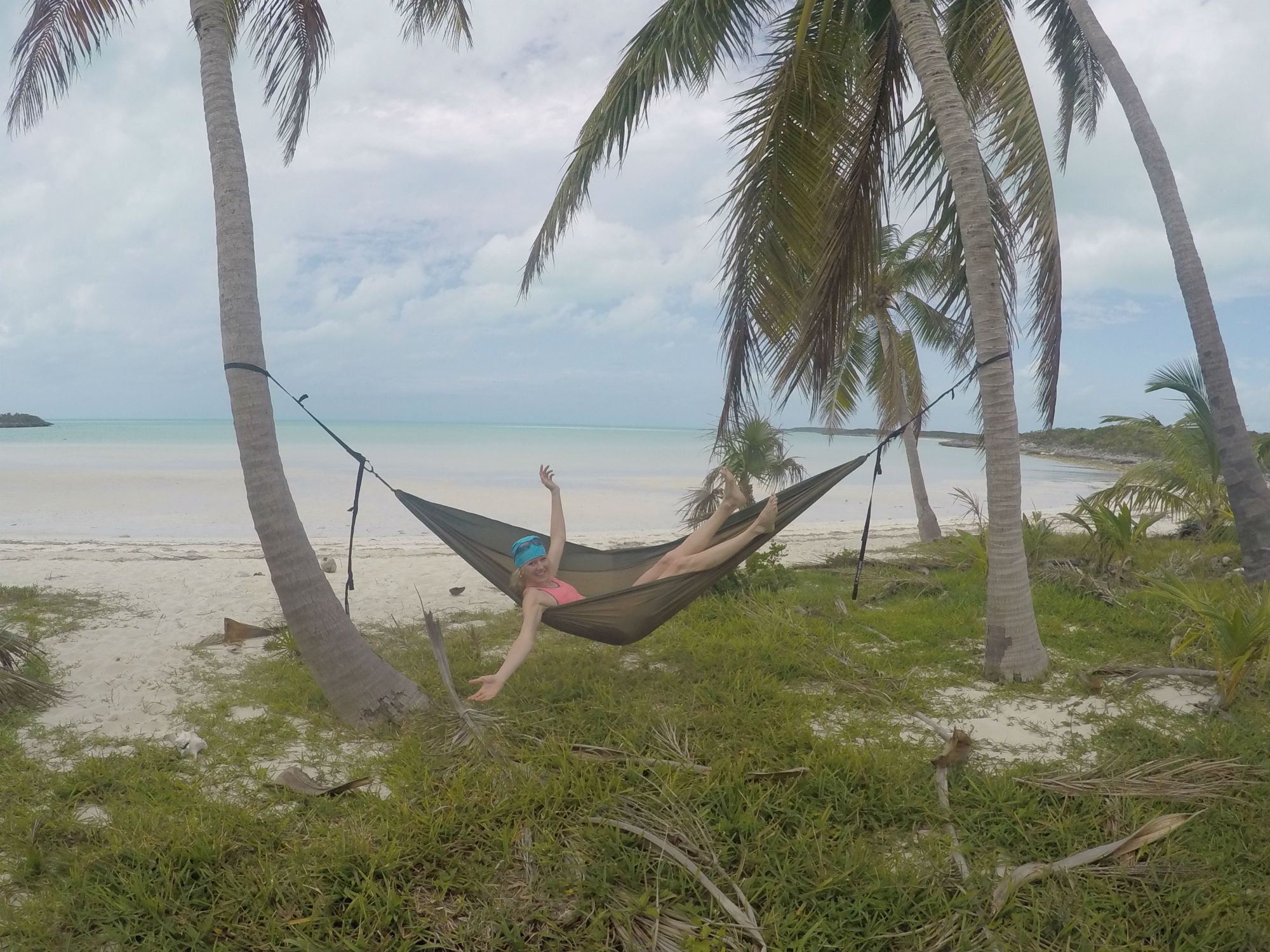
Our campsite wasn’t fancy, but it was completely private, nestled among tall palm trees on a stunningly beautiful beach. After a little bit of hiking around the island, we were pretty sure we were the only humans there. We prepared some dinner, had a small bonfire, and reveled in the fact that we were in paradise. With the fire dying down, we made sure the boats were well above the tide line, and we turned in for the night.
We spent the next week in a state of perpetual awe. We island-hopped in our boats, stopping at deserted beaches each as modernly bare and picturesque as the last, yet offering something unique. We saw “blow holes” where the strong swell on the windward side of the island is forced through small cracks in the rocks making huge geysers. We paddled through tiny islets that opened into expansive mangroves with raptors and fish galore. We snorkeled the wreck of an old seaplane. And on most islands, we found lush palm trees with ripe coconuts just begging to be eaten. Our paddles turned out to be the perfect length and with a couple of well-placed whacks, we were able to knock down a few.


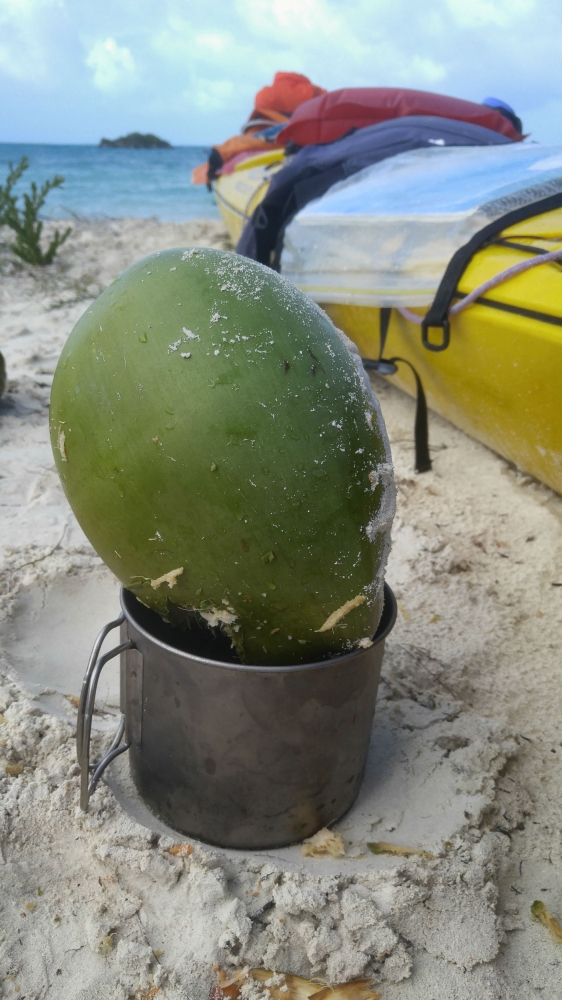
Of course, a machete wasn’t on the packing list for this trip, so prying our green treasures open took a bit of ingenuity. After hacking away with my blunt-tipped dive knife, I was finally able to crack them open. Let me tell you, nothing tastes better than the fresh water of a well-earned coconut. By repeating the process and collecting the water into our cooking pot, we were able to turn our boring white rice into a delicious dish of coconut rice.
The rhythms of paddling in paradise were easy to grow accustomed to: rising with the sun, waking with a morning swim, eating a leisurely breakfast, and exploring small, uninhabited cays. Rarely did we see other people, and when we did, it was usually passing tourist speedboats or the occasional small yacht. In fact, only one night during our entire trip did we have to share a beach. We ran into a group of kayakers on a guided tour, and so we had a gam and swapped stories and weather beta.
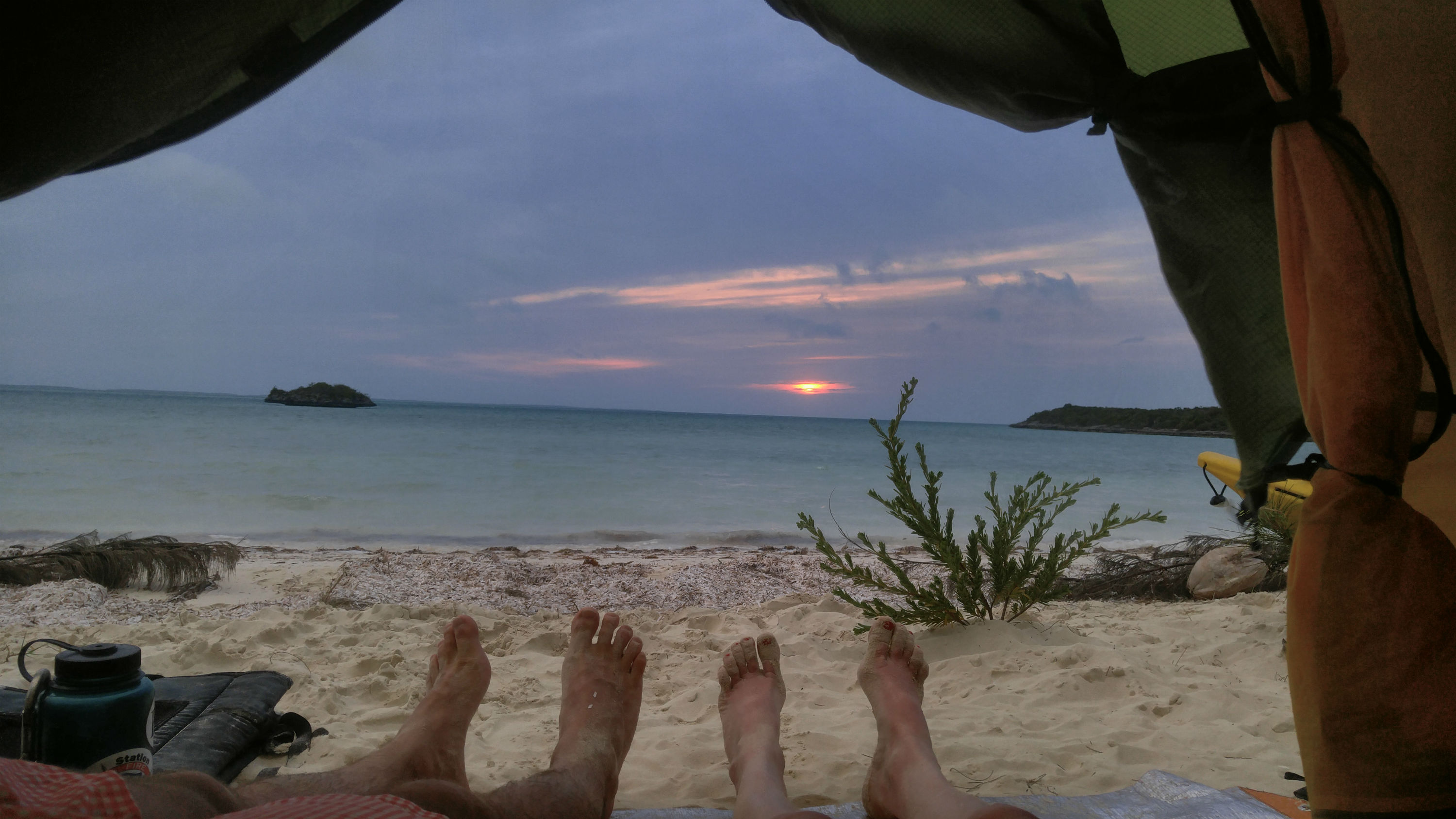
Toward the end of our week, the weather turned slightly against us; a refreshing breeze blew from the North and the seas started to build. When we reached Norman’s Pond Cay, we made the decision to head down to the Brigintines, a much smaller group of islands about three and half miles southwest. You can find a protected place to paddle in the Exumas in most any wind, but we had obligations to meet my family the following week, so we made the (relatively) long trek across choppy water until we tucked into the lee of Cooks Cay. We enjoyed the protected beaches and coves on the southern side of the islands as we made our way back toward Great Exuma.
The Exumas proved to be a paddler’s paradise and just the antidote I needed to recover from the long, dark days of the Antarctic winter. On top of the shallow, protected, warm water full of friendly wildlife, the camping was top notch, the locals (and tourists) were incredible, and the beauty of the place was breathtaking. If you’re looking for a warm-water escape, get out your lightweight gear, slap on some swim trunks, and head to the Bahamas.
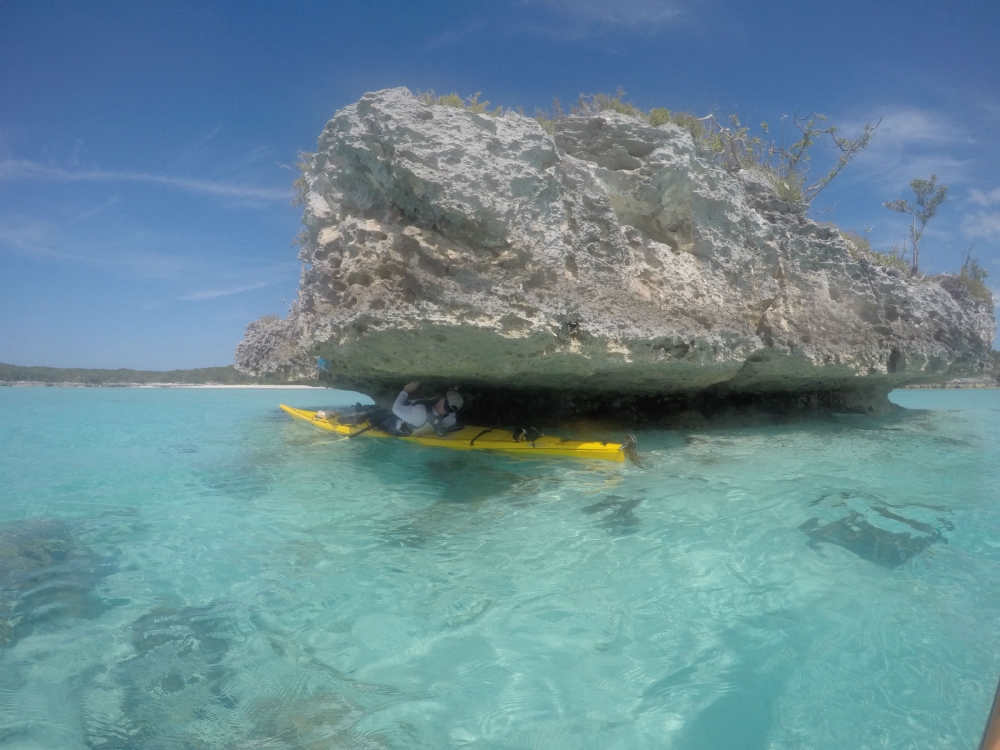


Editor’s Note: Guest contributor Julian Race works in Antarctica supporting research at the bottom of the planet; while not running computers and instruments on The Ice, he spends his time as an adventuring vagabond—hiking, camping, kayaking, sailing, and generally enjoying life.